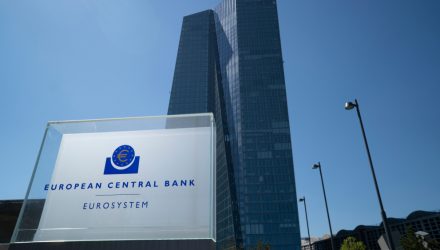With nations around the globe implementing their own rescue packages to stave off the economic effects of the coronavirus, it was only a matter of time before the European Union (EU) would follow. After EU leaders have agreed to a deal on a 750 billion euro ($858 billion) fund to address COVID-19 damage, the move is set to be a game-changer in the EU bond market.
“For the first time, the European Union will be a major force on sovereign debt markets,” said Berenberg chief economist Holger Schmieding, per a Reuters report.
“The EU currently has around 54 billion euros in outstanding debt, having borrowed nothing last year and just 5 billion euros in 2018,” the report noted. “But if the entire 750 billion euros is raised on bond markets, issuance could amount to 262.5 billion euros next year and in 2022, with the remaining 225 billion euros coming in 2023, ING senior rates strategist Antoine Bouvet estimates.”
Getting EU Debt Exposure via ETFs
One way that investors can get exposure to European bonds amid their rally is global debt exchange-traded funds (ETFs) that can offer this type of diversification. Investors looking for international corporate bond exposure can look to funds like the Invesco International Corporate Bond ETF (PICB). PCB seeks to track the investment results (before fees and expenses) of the S&P International Corporate Bond Index®.
The fund generally will invest at least 80% of its total assets in investment-grade corporate bonds that comprise the underlying index. The underlying index measures the performance of investment-grade corporate bonds issued in the following currencies of Group of Ten countries, excluding the U.S. Dollar (USD): Australian Dollar (AUD), British Pound (GBP), Canadian Dollar (CAD), Euro (EUR), Japanese Yen (JPY), New Zealand Dollar (NZD), Norwegian Krone (NOK), Swedish Krona (SEK) and Swiss Franc (SFR).
An Active, Investment-Grade ETF Option
If high yield is too much risk to bear, investors can opt for an investment-grade option like the Principal Investment Grade Corporate Active ETF (IG). IG seeks to provide current income and, as a secondary objective, capital appreciation.
Additionally, the fund is an actively managed ETF that seeks to achieve its investment objective by investing, under normal circumstances, at least 80% of its net assets, plus any borrowings for investment purposes, in investment grade corporate bonds and other fixed income securities at the time of purchase. “Investment grade” securities are rated BBB- or higher by S&P Global Ratings (“S&P Global”) or Baa3 or higher by Moody’s Investors Service, Inc. (“Moody’s”) or, if unrated, of comparable quality in the opinion of those selecting such investments.
For more market trends, visit ETF Trends.

